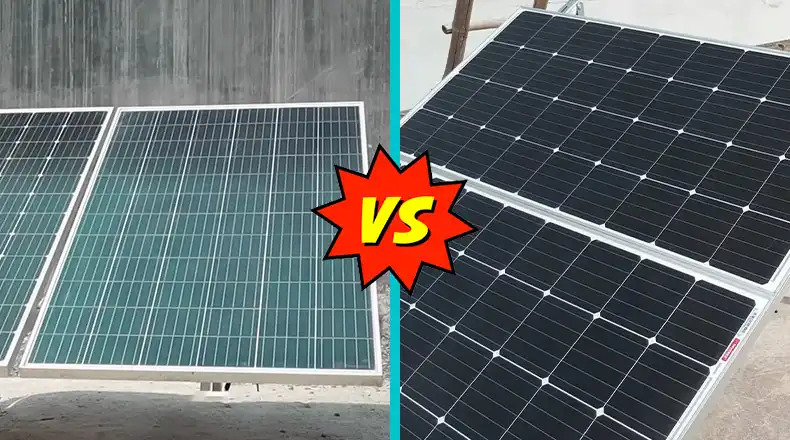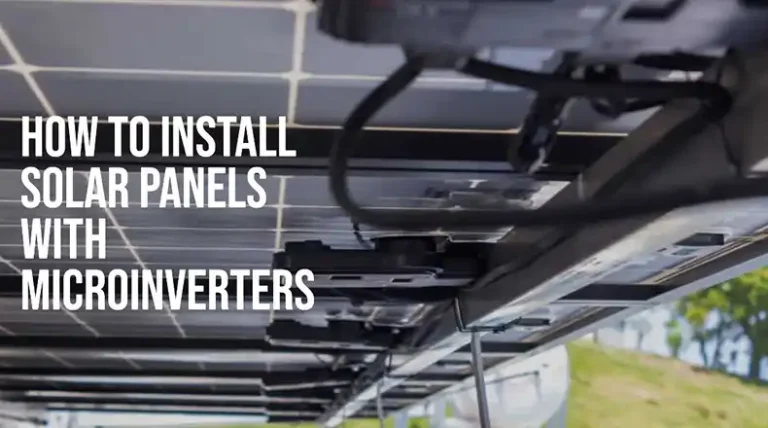Difference Between 150w 14 Panels Vs 300 Watt 7 Panels
Solar panels are an important renewable energy technology that converts sunlight into electricity. As homes and businesses adopt solar power, one key decision is choosing the right solar panel wattage and specifications for your needs and roof space.
Determining the appropriate system size and solar panel wattage is vital to generating sufficient electricity while staying within budget. This article compares two common system configurations – 150W 14 panels that produce 2,100 total watts, and 300W 7 panels that also output 2,100 total watts. While the total wattage is the same, factors like voltage, panel dimensions, wiring needs, and costs can differ substantially between these system layouts.
Knowing these key differences will ensure you select the ideal solar array for your location that maximizes annual energy production. The next section will provide a detailed overview of the power output ratings, electrical characteristics, physical size, and cost considerations when deciding between purchasing 150 watt 14 solar panels or 300-watt 7 solar panels.

Electrical Specifications of 150w 14 Panels Vs 300 Watt 7 Panels
Panel voltage varies based on size. 150W panels (60 cells) have lower voltage vs. 300W panels (72 cells) with higher voltage. Higher-wattage panels often require thicker wires due to increased current.
Configurations and Voltages
Solar panel voltage output is dependent on the cell efficiency, and technology, and cell interconnect configuration, not strictly correlated to wattage ratings. Both 60-cell and 72-cell panels can produce suitable voltages for common household solar systems. It’s important to consult the datasheet for each individual solar panel model to understand the exact voltage specifications. Typical voltage ranges would be 30-45 volts for a common 60-cell panel and 45-90 volts for a high-efficiency 72-cell SunPower solar panel.
Operating Currents and Wiring
Higher-wattage solar panels will result in increased current output – for instance, a 300W panel may operate at 8 amps whereas a 150W panel would produce around 4 amps. The greater currents require thicker wiring gauges to handle the electrical load safely. Proper wire sizing takes into account temperature rating, conduit fill percentage, and array distance from the solar converter. Guidelines like the National Electrical Code (NEC) provide recommendations on appropriate wire specifications for solar installations. Consulting a qualified electrician can also provide guidance on electrical safety for a new solar system.
Power Output of 150w 14 Panels Vs 300 Watt 7 Panels
Solar panels, as the name suggests, harness the sun’s energy and convert it into electricity. This electrical output is measured in watts (W), with higher wattages indicating greater power generation.
Now, here’s the key point: both the 14 x 150W and 7 x 300W system configurations deliver the same total power punch – a respectable 2,100 watts. So, whether you go with the multitude of 150W panels or the leaner squad of 300W powerhouses, your overall energy harvest will be identical.
However, when it comes to individual panel performance, the wattage disparity shines through. Each 150W panel, as expected, generates less power compared to its 300W counterpart. This doesn’t diminish the 150W option but simply reflects the nature of different wattages.
Comparison Between 150W 14 Panels vs. 300W 7 Panels
Below is a comprehensive comparison table taking into account the specified information for both 150W 14 Panels and 300W 7 Panels:
| Criteria | 150W 14 Panels | 300W 7 Panels |
| Technical Specifications | ||
| Individual Panel Wattage | 150W | 300W |
| Total System Capacity | 2100W (150W * 14) | 2100W (300W * 7) |
| Ideal Use Cases | ||
| Residential Applications | ✔️ Suitable | ❌ Less suitable |
| Small-Scale Installations | ✔️ Ideal | ❌ Less ideal |
| Efficiency and Performance | ||
| Conversion Efficiency | Moderate | High |
| Space Utilization | Efficient use of space due to smaller panels | Larger panels may have space utilization challenges |
| Performance in Various Conditions | ||
| Sunlight Intensity | Good performance under standard conditions | Efficient energy production under varying sunlight intensity |
| Temperature Sensitivity | Moderate impact | Moderate impact |
| Cost Considerations | ||
| Initial Investment | Lower cost per panel | Higher cost per panel |
| Cost per Watt | Cost-effective | Higher cost per watt |
| Total System Cost | Generally lower total system cost | Generally higher total system cost |
| Long-Term Cost Savings | Economical over time due to smaller panels | Potential for higher energy production and savings in the long run |
| Maintenance Costs | Generally lower | Generally lower |
| Environmental Impact | ||
| Carbon Footprint | Lower emissions per panel | Higher emissions per panel |
| Emission Reduction | Modest impact on reducing carbon footprint | Potential for a more significant impact on reducing carbon footprint |
| Sustainability Factors | Compact size supports sustainable installations | Larger size may impact sustainability due to space challenges |
| End-of-Life Disposal Considerations | Smaller panels may be easier to dispose of | Larger panels may pose challenges in disposal |
| Installation Requirements | ||
| Space and Layout | Requires less roof space, suitable for smaller areas | Requires more roof space, suitable for larger areas |
| Area Needed for Each System | Compact footprint | Larger footprint |
| Installation Complexity | Generally less complex | May have limitations in upgrading due to the larger size |
| Compatibility with Existing Systems | Generally compatible with various setups | May have integration challenges |
| Upgradability | Easier to upgrade with additional panels | May have limitations in upgrading due to larger size |
This table provides a detailed comparison of various aspects between 150W 14 Panels and 300W 7 Panels, aiding in making an informed decision based on specific needs and preferences.
Physical Size and Weight of 150w 14 Panels Vs 300 Watt 7 Panels
The physical characteristics of solar panels play a crucial role in their installation, handling, and overall suitability for different settings. Here’s a comparison between the dimensions and weight of the 150 Watt 14 panels and the 300 Watt 7 panels:
150W Panels
– Dimensions: 39 x 26 inches
– Weight: 27 pounds
300W Panels
– Dimensions: 65 x 39 inches
– Weight: 50 pounds
Implications for Installation and Usage
The smaller size and lighter weight of the 150W panels make them more manageable for handling and transportation. Their dimensions are conducive to installations with limited space or on roofs with specific size constraints. On the other hand, the 300W panels, being larger and heavier, may require more robust mounting structures and careful consideration of the available roof space.
Roof Space Utilization
While it might seem that using 7 panels of 300W would maximize roof coverage with fewer panels compared to 14 panels of 150W, it’s essential to consider the total roof area required and the efficiency of coverage. The larger size of 300W panels might not efficiently fit into all available spaces, especially on roofs with irregular shapes. On the contrary, the smaller 150W panels may offer better adaptability to varying roof configurations.
Cost Comparison of 150w 14 Panels Vs 300 Watt 7 Panels
When comparing the costs of 150W 14 Panels and 300W 7 Panels, several key factors come into play. In terms of the initial investment, 150W panels generally have a lower upfront cost, benefiting those with budget constraints. The cost per watt for 150W panels tends to be lower, reflecting the affordability of each individual panel. However, when considering the total system cost, the cumulative effect of having 14 panels may impact the overall budget.
On the other hand, 300W panels have a higher initial investment due to their larger size and potentially higher cost per panel. The cost per watt for 300W panels is usually higher, aligning with the greater wattage. While the installation and maintenance costs for 150W panels are generally lower due to their smaller and lighter nature, 300W panels may have higher maintenance costs despite potentially simpler installations. It’s important to weigh these factors based on individual needs, available space, and budget considerations, considering both the immediate costs and long-term savings potential.
Benefits and Drawbacks of 150W 14 Panels vs. 300W 7 Panels
Here are some benefits and drawbacks of 150W 14 panels vs. 300W 7 panels given below:
150W 14 Panels
Benefits
1. Smaller individual panels often result in a lower cost per panel, making the initial installation more budget-friendly.
2. Well-suited for residential use and small-scale installations, providing flexibility for a variety of applications such as homes, cabins, or off-grid setups.
3. Lighter weight and smaller dimensions make these panels easier to handle during installation and maintenance tasks.
4. More efficient use of available space due to smaller panel size, making them suitable for areas with limited rooftop space.
5. Generally has a lower environmental impact, contributing to a modest carbon footprint reduction.
Drawbacks
1. Each panel has a lower wattage, which may require a larger number of panels to achieve the desired power output.
2. May not be the most efficient choice for larger commercial installations where higher power output is crucial.
300W 7 Panels
Benefits
1. Each panel has a higher wattage, resulting in the potential for fewer panels to achieve the same power output, reducing installation complexity.
2. Ideal for commercial applications and larger-scale installations where a higher power output is required.
3. Higher efficiency and power output may lead to greater long-term energy production and cost savings.
4. Fewer panels to install may simplify the installation process, reducing labor and associated costs.
Drawbacks
1. Larger individual panels and potentially higher cost per panel contribute to a higher upfront investment.
2. Larger panel size may pose challenges in efficiently utilizing available roof space, especially in installations with irregular shapes.
3. Generally has a higher environmental impact, contributing to a larger carbon footprint.
4. Larger and heavier panels may require more complex handling during installation and maintenance tasks.
The choice between 150W 14 Panels and 300W 7 Panels depends on specific needs, budget constraints, and the available space for installation. The smaller panels offer cost-effectiveness and versatility, while the larger panels provide higher individual wattage and efficiency, particularly suited for larger-scale installations.
Questions & Answers (Q&A)
Q1. What is the main difference in terms of power output?
A: The main difference is in the individual power of each panel. The 150W panels produce 150 watts each, while the 300W panels produce 300 watts per panel. However, with 14 and 7 panels respectively, the total power output potential is equal at 2,100 watts.
Q2. Do the panels have different voltage output?
A: Yes. Typically 150W panels have lower 60-cell configuration with around 44 volt VOC. 300W panels usually utilize 72-cell configuration with 92 volt VOC.
Q3. Which panel setup requires more physical roof space?
A: The 14 x 150W panels require more total roof coverage to allow mounting space for a greater number of individual panels, versus the 7 x 300W larger panels.
Q4. What about longevity – do both panel types last as long?
A: Both 150W and 300W solar panels can have a comparable 25+ year lifespan. Their durable silicon cell construction allows them to withstand harsh outdoor conditions for decades. Proper maintenance is key.
Q5. Which solar system costs more initially?
A: While the 300W panels cost more individually, the total system cost can be similar depending on brand, components, and installer pricing. Overall cost per watt is a useful metric for comparison.
Final Words
When selecting between 150W and 300W solar panels, the ideal configuration depends on electricity requirements, roof space, budget, and long-term performance projections. Carefully weigh power output needs, panel dimensions, wiring, costs, and estimated production against site installation factors. Utilize solar calculators and consult qualified solar professionals to help determine the system that optimally fits your household’s or business’ solar energy goals.





![[ANSWERED] 100 Watt Solar Panel How Many Amps?](https://www.itekenergy.com/wp-content/uploads/2023/11/100-Watt-Solar-Panel-How-Many-Amps-768x428.webp)
